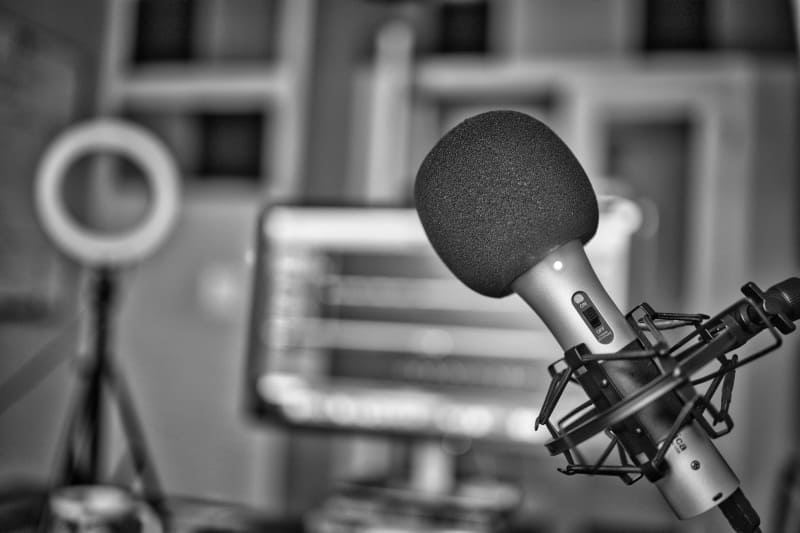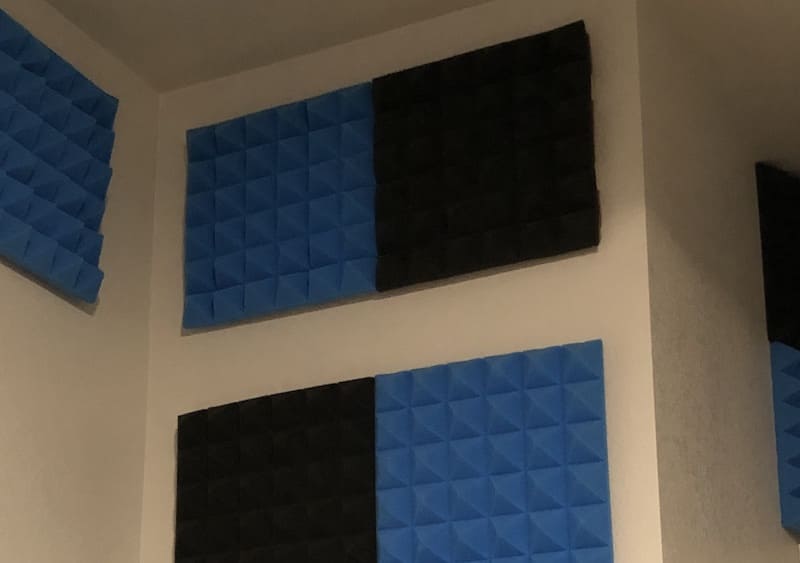Do you hear an echo in your podcast episode? Obviously, it’s best to have super clean audio. So let’s get into the weeds so you can get rid of the distracting echo.
The two biggest factors are:
- where you are recording
- the microphone you’re using
Echos are a relatively cool aspect of science most people have experimented with (come on, who hasn’t shouted in an empty room hoping to hear an echo?), but they can be quite annoying for podcasters.
What’s even more annoying is the fact that many people don’t know how to prevent the audio degradation that comes with echos during recording.

If you have problems with this, or if you are a newbie to podcasting and would like to know how to keep your podcasts beautiful and consistent in quality, you’re at the right place.
So, how do you get rid of echos? There are three critical steps in preventing echos:
- Location
- Hardware
- Software
Ideally, this would all be available in a standard studio with padded walls and high-end recording equipment.
Unfortunately, not everyone has this luxury, particularly given the current circumstances with coronavirus, which has made it such that the majority of podcasters (yes, even the pros) record from home. So what alternatives exist? Let’s dive in and find out.
Table of Contents
1. Location
Echos form when sound waves reflect (bounced) off of hard surfaces. This means that when sound waves bounce off, say, a wall from a certain distance -at least 17.2 meters- part of that sound, it is reflected and received as echos. Based on this information, there are two main ways to prevent echos:
- Proximity: keep close proximity such that there is not much space for sound waves to bounce off.
- Padding: Objects with some form of padding or the other help a whole lot in reducing echo. The softer the material, the more absorbent it’ll be. Foam is a preferred surface for this.

With this in mind, whatever location you choose should either be relatively enclosed or padded (or filled with items that can absorb sound adequately).
The preferred place in the home that succinctly fits these criteria is the closet.
Closets are usually more enclosed than most rooms in the house, and clothes make for a pretty good pad to absorb rogue sound waves.
You could also record in your bedroom, and place pillows around your microphone to absorb sound waves (you can try this in any room in the home, and find out what works for you the best). There are a few other places to record, but wherever you choose should satisfy these two conditions.
Record in a room that doesn’t have bare, hard surfaces. A closet is normally the best option if it has the room for you to set up.
2. Hardware
Use the right microphone for the job.
One thing many new podcasters don’t take into consideration is the sort of hardware they use for their podcasts. Many new podcasters tend to trust their device’s integrated microphone, which isn’t necessarily wrong.
The thing is that integrated microphones are most times not as quality as dedicated microphones. These built-in microphones are also not as detailed and more prone to giving echos.
Specialized microphones, called dynamic microphones, pick up sound in more detail from mainly one direction -right in front of it. They are primarily designed with podcasters and radio hosts in mind and are quite essential if you’re interested in getting the best sound quality possible. The ATR2100 is a great dynamic mic used by many podcasters — with a USB and XLR hookups. (See on Amazon)
Normally, built in mics are condenser mics so they pick up more sounds since they are more sensitive. That’s a strength when you’re doing an interview with multiple people – the mic will hear all parties in the room.
However, condenser mics also pick up the sounds of the room, which might be echos that you do not want to hear. The Blue Yeti is a great condenser mic with settings to go from a condenser to a dynamic mic. (See on Amazon)
This is in contrast with integrated microphones designed to pick up multi-directional sound with rarely any form of engineering in place to fine-tune and critically process that sound.
With a specialized microphone, you are getting a well-designed piece of hardware made to suit your needs as a podcaster. The design also means that it will be less prone to certain defects due to the amount of detailed engineering that is put in place for the device to work optimally.
With integrated microphones, you don’t get this. What you mostly get is a standard experience with basic-to-medium quality hardware. Now, this makes it very susceptible to issues like echoing.
It is not to say that integrated microphones are inadequate or utterly flawed, but more often than not, you’re better off with a dedicated mic.
That said, some devices come with surprisingly quality integrated microphones for use. Sometimes, though, these microphones need to be tweaked to give out that premium quality.
Dedicated microphones come in a variety of qualities and price points to suit your needs (and your pocket). What’s more is that the majority of specialized microphones in the market have specific functions and perks that, with the right software, make them pretty amazing.
If it’s one person per mic, then a dedicated microphone is the best option. Then you can even record in a less than ideal room (bare wood floors and bare walls) and still have great sound.
If you’re doing interviews and have more than one person for a mic, then a condenser mic is best. But you should be in a quiet non-echo producing room or you’ll hear the echo.
3. Software
It may come as a surprise to you, but software accounts for a chunk of your recording quality. How? Well, there are specific configurations that, while designed to help with the applicability of particular hardware, are detrimental to recording quality.
One example of that was when many Windows users discovered that they had issues with echoing when they recorded audio. The root problem was found to be the audio enhancements that were integrated into the microphone settings.
These settings, hence, had to be turned off for many people who suffered this problem to rectify the issue.
Third-party developed apps (especially recording apps) are also susceptible to issues like this, so you must always check out the tweaks and configurations of these apps if you hope to use them to record your podcasts.
That said, there is a host of recording apps out there, built to make your podcasts sound amazing. These applications help not just for recording but editing and tuning as well.
When used with just the right hardware, these apps are quite efficient, even though some of them are quite expensive. It is something worth considering, though, if you’re serious about podcasting.
Conclusion
With these steps in mind, it should be easy to keep your podcasts sounding as crisp and clear as they should be, without the probability of echos in your recordings.
It is also advisable that you run regular checks on your recording equipment to ensure that it is in the best shape possible. We hope these tips will be of great help to you.
Happy podcasting!
